Peter B. Cotton's Blog
October 8, 2025
Fred book 10 is published!!!!!
Delighted to introduce "When Fred the Snake and Friends learn the Chinese Zodiac - and the Great race.
After returning from their adventures exploring USA, Fred went back to school with Perdy and Jack. They met two Chinese kids, Connor and Ellie, who reminded Fred that 2025 is the year of the snake in the Chinese Zodiac calendar. They told him how it all came about with the Jade Emperor challenging 12 animals to a great race to determine the sequence of years. They tumbled over each and across the river to the Heavenly gate. All went well and they celebrated Chinese New Year with a Dragon and Lion dance and a traditional feast.
GO FRED!
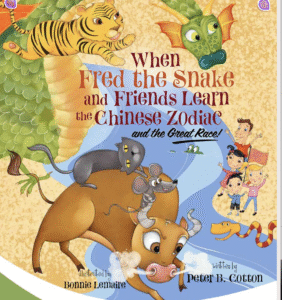
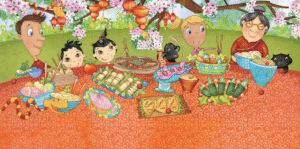
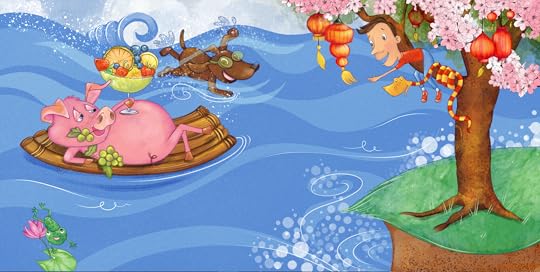
Available at bookstores, Amazon, Barnes and Noble, and signed copies at wwwpetercottontales.com
June 29, 2025
Fred’s NEW BOOK. All about the Chinese Zodiac and the Great Race
Delighted to provide this sneak peek at the upcoming new Fred book
“Fred the Snake and Friends meet the Chinese Zodiac - and the Great Race”
Fred found new friends at school, two Chinese kids. They’re really cool.Meet Ellie and her brother Connor. Listen, it will be their honor to explain the Zodiac, to Perdy and her brother Jack.
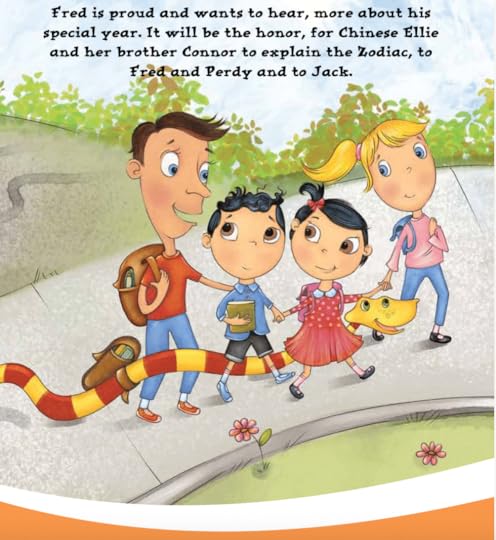
The Jade Emperor arranged a race to see the order in which the animals would appear in the Zodiac calendar. Off they go!
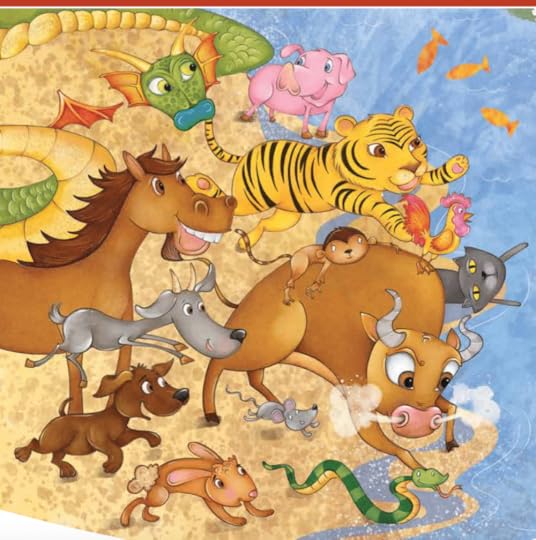
Which animal are YOU? Check your birth year (and extrapolate back if you are older than 53....)

Hoping to publish in a few weeks.
You can read some of Fred's other 9 books in the meantime.....
March 2, 2025
Physician/Doctor or Surgeon? A fun journey
I have been fortunate to have lived through a period of revolution in medicine. Indeed, had I been born 50 years earlier I would likely not be bothering you now.
There have been huge changes, but I will focus on an area in which I have participated, the interface between medical doctors (let’s call them “Physicians” as in Britain) and Surgeons.
First a little history. My Dad was a country doctor in England. When I made house calls to farms with him almost 80 years ago, the practice of medicine had changed little in centuries. He held hands, gave advice, delivered babies and signed death certificates. His tools were his brain, his hands, basic x-rays, some vaccines, and a few medicines, many concocted in our house by a live-in pharmacist called Ballard.
Things changed after the war. Penicillin arrived in 1948. We got the first refrigerator in the village to keep it cool. People came from far and wide to marvel at it (the refrigerator). During the 50s, 60s and 70s, Dad’s toolbox swelled with more antibiotics, diuretics, analgesics, cardiac meds and much more.
Diagnoses were made by enquiry, palpation, often leading to a “diagnostic laparoscopy”. The field changed dramatically with the development of scans in the mid 70s. Some of the first abdominal Ultrasound and CT scans were done on my patients at The Middlesex Hospital in London.
As the complexity of medicine and its treatments expanded, so did the number of Physician specialists, such as Cardiologists, Pulmonologists, Nephrologists and many more, not least Gastroenterologists, like me. Throughout this period, all of these remained Medical “Physicians” and were clearly distinct from Surgeons who worked only in hospitals and boldly cut and sewed.
Surgeons started as barbers a very long time ago. I read that they were first employed by Catholic monasteries to keep the tonsures tidy. Some got ambitious and started cutting deeper and were called upon to deal with injuries in warfare. They were not recognized by the established Physicians. A Society of “Barber-Surgeons” was founded in England in1540. The Surgeons split from the Barbers 1745 and founded the Royal College of Surgeons of London in 1800. Surgery became less “barbarous” late in the 19th century with the application of disinfection and anesthesia.
The ancient distinction (and sometimes rivalry) between Physicians and Surgeons lives on in Britain (and some parts of the old British Empire) where Surgeons are not called “Doctor”.
The practice of Physicians changed dramatically and progressively in the 1970s, at least in some specialties, as they became more invasive and infringed on traditional surgical turf.
Gastroenterologists developed flexible endoscopes to explore the digestive tract and its appendages through the mouth and anus. This allowed us to make more precise diagnoses, but also to treat many conditions on an out-patient basis that previously required an “open” operation and at least a week in hospital. Quickly we learned to treat esophageal and intestinal narrowings, remove swallowed foreign bodies, stop bleeding ulcers, extract bile duct stones and remove small growths.
Whilst many surgeons were probably not pleased to lose territory that they had spent years to train for, the advantage of many of these simpler treatments was so obvious that the changes occurred without significant “turf” disputes. After I gave a lecture to the Royal College of Surgeons in London about removing biliary stones through the mouth, the President, a wine connoisseur, said that they could license a few Physicians to do it but would charge “corkage” for each stone.
The science and practice of Surgery also developed substantially during this period, becoming less invasive with laparoscopic techniques (“Keyhole surgery”) and more so with organ transplantation and joint replacements.
Incidentally, the major shift in this Medical-Surgical boundary could have been felt in the pocketbook for those in private practice (like most of those in USA) who are usually paid by procedure. It was said “if you have only a hammer, everything looks like a nail”. Being compensated on a fixed salary reduces any temptation to steer patients towards your own technical expertise.
By the middle of my career, Gastroenterologists like me looked and behaved like Surgeons. Discarding smart suits and ties, and then white coats, we graduated to scrubs, gowns, masks and gloves. We had complex tools in our hands and steered them on TV monitors. Our patients were asleep. We had so much more in common with our Surgeon friends than with the “Medical” colleagues that we had trained with, such as Dermatologists and Psychiatrists.
Whilst Gastroenterologists have taken over the treatment of some digestive conditions, Surgeons remain dominant in others. However, there are also many circumstances in which the choice of treatment is nuanced, and where collaboration between them and indeed other specialists is essential. This is necessary not only to ensure that patients get the most appropriate treatment (and efficiently), but also to pursue the research needed to improve it.
And that is the problem with the system that has been with us since the Middle Ages. Medical schools throughout the world have major departments of “Medicine” and “Surgery.” Students and would-be specialists grow up in separate silos with distinct cultures, and, in most hospitals and private clinics, then practice separately. It seemed to me that this arrangement was no longer relevant and indeed potentially harmful, especially when dealing with complex patient problems. A patient going through the wrong door might not get the best treatment, at least initially. With so many diagnostic and therapeutic approaches to many diseases, not least cancer, it seemed a no-brainer to break the boundaries and develop a multidisciplinary approach.
I wrote an editorial to that effect in 1994 (referred below) and was invited to move from Duke to the Medical University of South Carolina to set up the first multi-disciplinary Digestive Disease Center. This included GI Surgeons and Gastroenterologists (as well as related specialists, such as Oncologists, Pediatricians and Radiologists). It seemed to work well in clinical practice and the concept has been adopted n many institutions, and indeed in other specialties.
Such collaboration is essential in daily practice, but also when new treatments develop and impact the interface, as happened recently. “Bariatric” surgeons have thrived for several decades with various operations for obesity. The most successful was removal of half of the stomach to make patients feel full rather quickly. I was involved with research to develop procedures that could be done instead endoscopically, through the mouth. The best so far is “gastroplasty”, which involves reducing the size of the stomach with a swallowed miniature suturing machine, which was invented by a company called Apollo Endosurgery (of which I was a founder member). Only a few years ago I predicted that doing such “bariatric endoscopy” procedures would become a major role for Gastroenterologists. But, suddenly, and very recently, along came the GLPI-1 antagonists, injections that work very well and are greatly impacting the more invasive, costly and permanent approaches by Surgeons and Gastroenterologists.
It is not difficult to imagine other similar future paradigm shifts. Many Gastroenterologists now spend their days doing colonoscopy to find and remove polyps. Their practice (and income) will be mightily disrupted when someone finds a pill that will prevent or dissolve polyps.
We can only wonder what the Gastroenterologists we are training now will be doing in 10,20- or 30-years’ time. I pass on some wise advice, given to me by a mentor: “Stay flexible, or prepare to get bent out of shape”.
The post Physician/Doctor or Surgeon? A fun journey appeared first on Peter Cotton's Tales.
February 22, 2025
Fred learns about the Barber’s pole…..
Friends of Fred the adventurous snake will recall that he had an accident in the first book when he first ventured out onto the street.
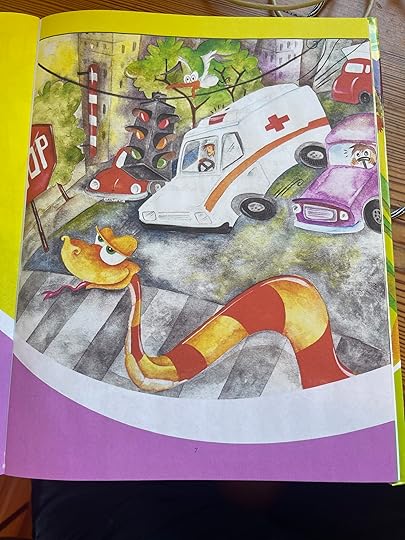


"He thought the stripey barber pole was another snake, but, oh my soul, he dashed across with never a glance, into the path of an ambulance".
Whilst recovering from his injury in hospital, Fred wanted to know more about barber's poles. Why do they look like snakes?
I am indebted to Wikipedia for Information about the origin of the barbers’ pole (slightly shortened for your comfort- the except, not the pole).
One theory is that it started serendipitously when post-treatment blood-streaked bandages wrapped themselves around the pole on which they were hung out to dry.
During medieval times, the pole had a brass basin at the top (where the leeches were kept) and bottom (to receive the blood). The pole itself represents the staff that the patient gripped during the procedure to encourage blood flow. In Holland the surgeons used the colored stripes to indicate that they were prepared to bleed their patients (red), set bones or pull teeth (white), or give a shave if nothing more urgent was needed (blue).
After the formation of the Barber Surgeons Company in England (in 1590), a statute required the barber to use a red and white pole, and the surgeon to use a red pole. In France, surgeons used a red pole. Blue often appears on poles in the United States, possibly as a homage to its national colors. Note also that, as usual, the US pole rotates in a different direction. Another interpretation is that red represents arterial blood, blue is symbolic of venous blood, and white depicts the bandage.
Glad we have got that all squared away….
What happened to Fred-Fred I hear you cry? You will be pleased to know that he survived his close shave (sic). He got mended with a special thread that the doctor wanted, that is found only under large rhinos! Who will get it?
"Volunteers please give your names. Suddenly I thought of James, who enjoys, so one supposes, hunting fierce rhi-nos-cer-oses"
Jim did it, saved the day and Fred...well done!
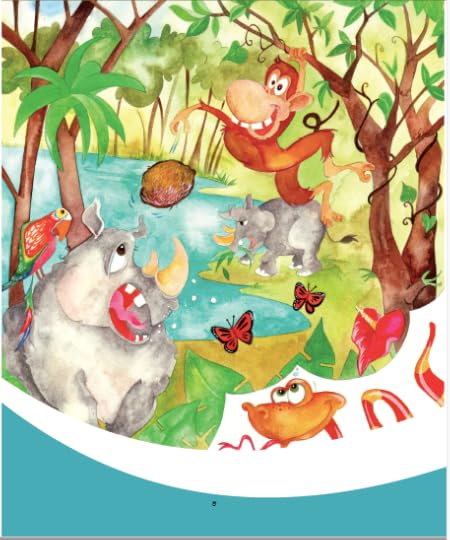

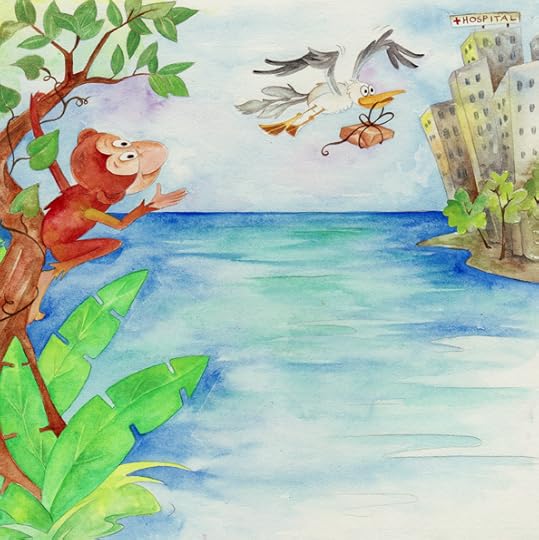

As he fell asleep, I heard Fred say "It's been a very trying day. Tomorrow, when I'm on the road, I won't forget my crossing code. And, nor will you, that's my advice, lest you spell your name like Fred-Fred twice".
The post Fred learns about the Barber’s pole….. appeared first on Peter Cotton's Tales.
January 27, 2025
Perdy and Jack join Fred’s adventures
 Andy and Nicky
Andy and Nicky  1969 bedtime story text When Nicky had her children, she asked "What happened to Fred-Fred". I found the 1969 text and a wonderful illustrator, Bonnie Lemaire. We published the first book "When Fred the Snake got Squished and Mended"
1969 bedtime story text When Nicky had her children, she asked "What happened to Fred-Fred". I found the 1969 text and a wonderful illustrator, Bonnie Lemaire. We published the first book "When Fred the Snake got Squished and Mended"  Perdy, Nicky and Jack
Perdy, Nicky and Jack  Bonnie
Bonnie 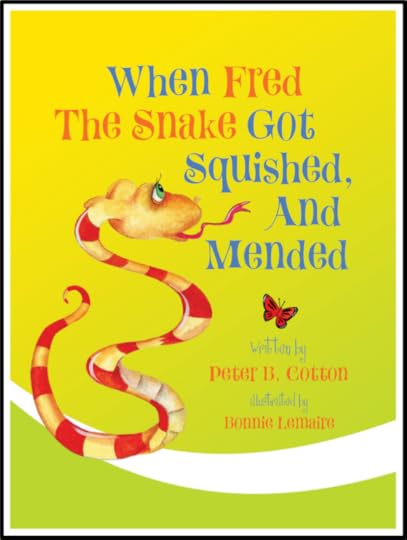 Perdy and Jack liked that book and others, so I asked their permission to include them in the new books. Jack went to the beach, where "he was trying to ride, two dolphins swimming side by side".
Perdy and Jack liked that book and others, so I asked their permission to include them in the new books. Jack went to the beach, where "he was trying to ride, two dolphins swimming side by side". 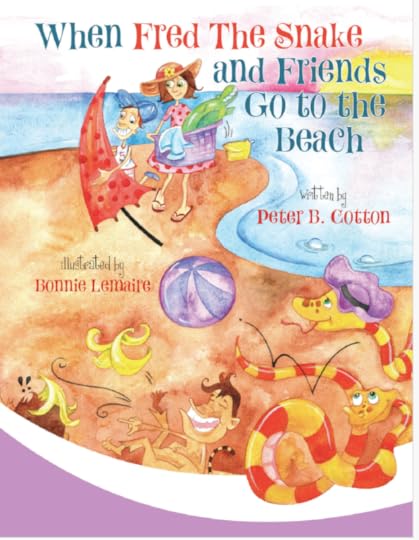
 Then Perdy joined the camping trip, and brought Coco their dog.
Then Perdy joined the camping trip, and brought Coco their dog. 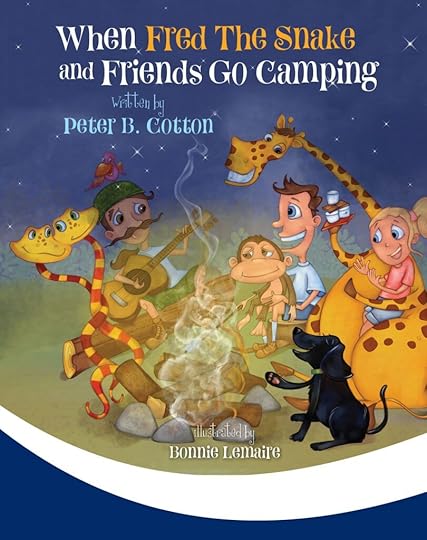
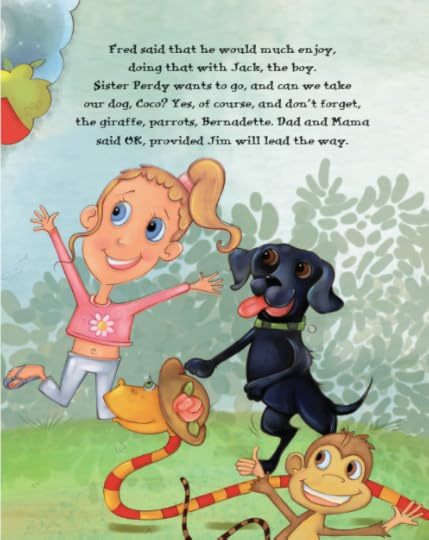
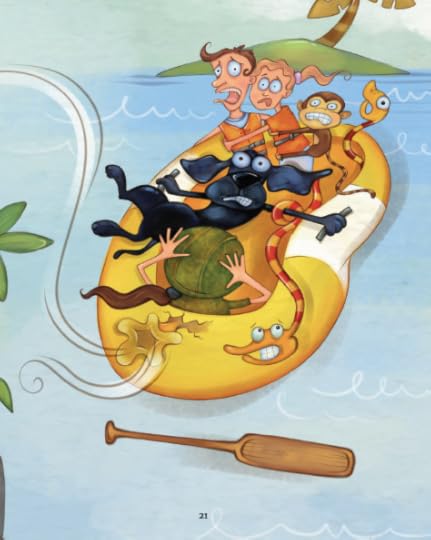 Ooops, over the waterfall
Ooops, over the waterfall  Jack and Perdy building a fire The family is completed when Kiki, their cat, joins the fun.
Jack and Perdy building a fire The family is completed when Kiki, their cat, joins the fun. 
 Coco and Kiki with Jack
Coco and Kiki with Jack 
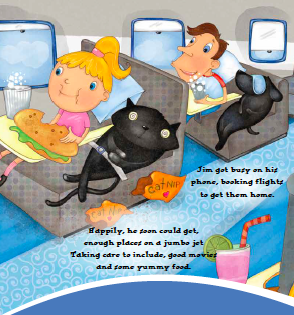 Flying home in style The real Perdy and Jack have done their own exploring in USA. First stop DC, as in the 7th book
Flying home in style The real Perdy and Jack have done their own exploring in USA. First stop DC, as in the 7th book 
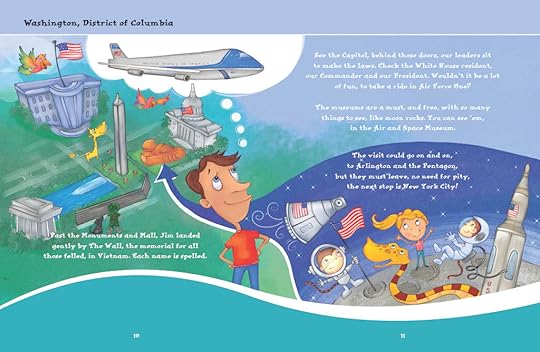 Jack says "Wouldn't it be a lot of fun to have a ride in Airforce One?"
Jack says "Wouldn't it be a lot of fun to have a ride in Airforce One?" 
 Fred and I thank you, Perdy and Kiki and Jack and Coco, for your help with my books!
Fred and I thank you, Perdy and Kiki and Jack and Coco, for your help with my books! 
 Get the books at Ingram, Amazon, bookstores. Press the View Books button to access signed copies. View Books
Get the books at Ingram, Amazon, bookstores. Press the View Books button to access signed copies. View Books The post Perdy and Jack join Fred’s adventures appeared first on Peter Cotton's Tales.
January 22, 2025
2025 is the year of the snake! Go Fred!
Did you know that January 29, 2025, marks the beginning of the Year of the Snake? Fred is rather pleased.
Wikipedia says "The lunar calendar consists of a cycle of the twelve animals, in sequence: rat, ox, tiger, rabbit, dragon, snake, horse, ram, monkey, rooster, dog, and pig. Each year, an animal is paired with one of the five elements: gold, wood, water, fire, and earth. The wood snake is a charming, intelligent and creative sign, but also secretive, cunning and sometimes ruthless". Ooops..
"Snakes are known for their ability to shed their skin, symbolizing the process of letting go of the old and embracing the new. Individuals are encouraged to release their past baggage and embark on a journey of self-discovery".
Fred has got a head start, having re cently completed his fun journey of discovery across the USA in 3 books. All have earned Mom's Choice Gold awards.
cently completed his fun journey of discovery across the USA in 3 books. All have earned Mom's Choice Gold awards.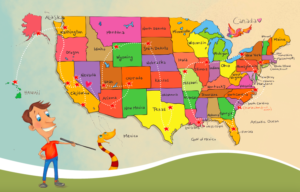
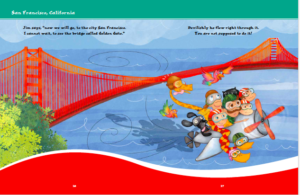
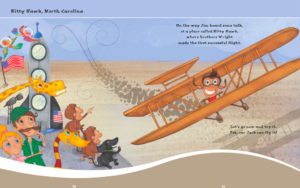
So, will Fred and friends start a new adventure soon? Where should they go?
All 9 of Fred's books are available at bookstores,Ingram and Amazon. Signed copies at www.petercottontales.com/books
The post 2025 is the year of the snake! Go Fred! appeared first on Peter Cotton's Tales.
January 10, 2025
Famous Authors of children’s books, and me!
While contemplating writing another of my books about Fred the lovable snake, I have been remembering the authors which captured my imagination as a child, and perhaps awakened my own muse. There were four authors, all British, like me...
Lewis Carroll (1832-1898) is of course famous for "Through the looking glass" and "Alice in Wonderland". Why are those curious stories and images so fascinating?
Roald Dahl (1916-1990) was a prolific writer in several genres. His first book for children was "James and the Giant Peach" which became popular, but he is best known now for "Matilda" that has morphed into movies and an ever-popular musical.
Matilda is one of my favorite stories by Hillaire Belloc (1870-1953) in his wonderful "Cautionary tales for children". My grandmother used to sing it to me while playing scary tunes on the piano. Matilda told lies which undid her. "When she shouted fire, they all responded little liar". Other children got their unique grisly comeuppances for misbehaving. One for eating string "the doctors, as they took their fees, said there is no cure for this disease. Henry will very soon be dead"). Another was eaten by a lion when running away at the zoo "be sure to keep a hold of nurse, for fear of finding something worse". And many more.....Belloc was borne French but was smart enough to take British nationality and even became a Member of Parliament.
Beatrix Potter (1866-1943) is remembered and loved for her charming stories about cute rabbits, notably Peter Rabbit, Flopsy, Mopsy, Benjamin Bunny and Cottontail.
Why am I telling you all this (those who have got this far)? Apologies, but I was unable to resist sharing excerpts from two reviews for my first Fred book.

The Children’s book review 2018. In the vein of the great cautionary tales, from writers like Hilaire Belloc to Roald Dahl, How Fred the Snake Got Squished, and Mended uses witty illustrations and multi-layered language to hide an important message within a wildly entertaining story.
Children's Bookwatch: 2015 Midwest Book Review. An award-winning children's book series in stunning verse, "When Fred the Snake Got Squished and Mended" (otherwise popularly known as "Fred-Fred") is a beloved, original tale of a charming, adventurous, jungle snake pet who lacked crossing traffic skills...... Kids of all ages will enjoy this delightful story and entire series, originally written by an English physician for the enjoyment of his children and grandchildren. Move over for "Fred-Fred," Lewis Carroll!
And of course we have a special connection with Beatrix Potter. I did not know until I moved to USA that I was named after a rabbit. Peter Cottontail is a popular American character, busy especially when hopping around at Easter-time. Check out people had, and still have, a habit of giggling at my name. We have embraced the connection, not least because I have the full monty: Benjamin is my middle name.

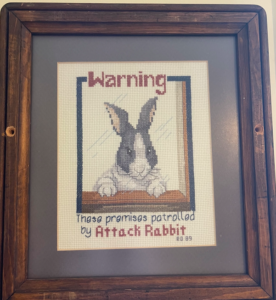
We visited Beatrix Potter's house recently.

Thanks for sticking with me ...if you have.
The post Famous Authors of children’s books, and me! appeared first on Peter Cotton's Tales.
Famous British authors of children’s books
While contemplating writing another of my books about Fred the lovable snake, I have been remembering the authors which captured my imagination as a child, and perhaps awakened my own muse. There were four authors, all British, why not.....
Lewis Carroll (1832-1898) is of course famous for "Through the looking glass" and "Alice in Wonderland". Why are those curious stories and images so fascinating?
Roald Dahl (1916-1990) was a prolific writer in several genres. His first book for children was "James and the Giant Peach" which became popular, but he is best known now for "Matilda" that has morphed into movies and an ever-popular musical.
Matilda is one of my favorite stories by Hillaire Belloc (1870-1953) in his wonderful "Cautionary tales for children". My grandmother used to sing it to me while playing scary tunes on the piano. Matilda told lies which undid her. "When she shouted fire, they all responded little liar". Other children got their unique grisly comeuppances for misbehaving. One for eating string "the doctors, as they took their fees, said there is no cure for this disease. Henry will very soon be dead"). Another was eaten by a lion when running away at the zoo "be sure to keep a hold of nurse, for fear of finding something worse". And many more.....Belloc was borne French but was smart enough to take British nationality and even became a Member of Parliament.
Beatrix Potter (1866-1943) is remembered and loved for her charming stories about cute rabbits, notably Peter Rabbit, Flopsy, Mopsy, Benjamin Bunny and Cottontail.
Why am I telling you all this (those who have got this far)? Apologies, but I was unable to resist sharing excerpts from two reviews for my first Fred book.

The Children’s book review 2018. In the vein of the great cautionary tales, from writers like Hilaire Belloc to Roald Dahl, How Fred the Snake Got Squished, and Mended uses witty illustrations and multi-layered language to hide an important message within a wildly entertaining story.
Children's Bookwatch: 2015 Midwest Book Review. An award-winning children's book series in stunning verse, "When Fred the Snake Got Squished and Mended" (otherwise popularly known as "Fred-Fred") is a beloved, original tale of a charming, adventurous, jungle snake pet who lacked crossing traffic skills...... Kids of all ages will enjoy this delightful story and entire series, originally written by an English physician for the enjoyment of his children and grandchildren. Move over for "Fred-Fred," Lewis Carroll!
And of course we have a special connection with Beatrix Potter. I did not know until I moved to USA that I was named after a rabbit. Peter Cottontail is a popular American character, busy especially when hopping around at Easter-time. Check out people had, and still have, a habit of giggling at my name. We have embraced the connection, not least because I have the full monty: Benjamin is my middle name.


We visited Beatrix Potter's house recently.

Thanks for sticking with me ...if you have.
The post Famous British authors of children’s books appeared first on Peter Cotton's Tales.
December 7, 2024
Holiday greetings
In previous years we have sent our annual end of year holiday letter by snail mail. To save trees (and some funds/energy) I have attempted to send it mainly by email. Recognizing that some of the addresses are probably outdated, I am attaching it also here. Apologies if duplicated, mis-fired or irrelevant. Ignore at leisure. In any event “Happy Holidays”.


The post Holiday greetings appeared first on Peter Cotton's Tales.
October 26, 2024
Why Snake, and why Fred?
You may know that I write books for young children about Fred the snake. I am often asked, and you may wonder, why choose a snake? Snakes are not most children’s favorite pets or cuddlies. Surely a koala bear or a cute dog would have been a better subject, and gotten more traction in the marketplace? The answer is prosaic (whatever that means). I am/was a gastroenterologist, spending many of my days guiding long black flexible instruments (endoscopes) into peoples downs and ups (yuck!). When I explained my day job to my then young children, Andy and Nicky, and showed them photos, they said “It’s a SNAKE”.
OK, that makes sort of sense, so why Fred! Not sure about that but I think it’s because we (the kids and I) were obsessed with a popular song at the time, brought to life by the lovely Bernard Cribbins. We had been moving house and the helpers had been having difficulty getting some furniture upstairs. Try singing it…..
“Right” said Fred “Both of us together, one each end and steady as we go”Tried to shift it, couldn’t even lift it, we was getting nowhere.
And so, we had a cuppa tea and“Right” said Fred, “Give a shout for Charlie”Up comes Charlie from the floor below
After strainin’, heavin’ and complainin’ we was getting nowhere
And so, we had a cuppa teaAnd Charlie had a think, and he thought we ought to take off all the handles
And the things wot held the candles
But it did no good, well I never thought it would“All right, ” said Fred, “Have to take the feet off
To get them feet off wouldn’t take a mo”.Took its feet off, even took the seat off
Should have got us somewhere but no!
So Fred said, “Let’s have another cuppa tea”
And we said, “right-o”……..and moreBernard Cribbins, last seen with John Cleese in Fawlty Towers
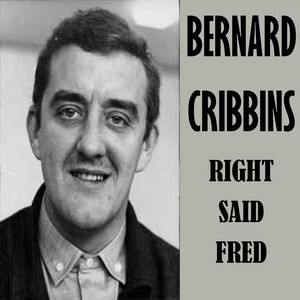
 So we called the snake “Fred”, and made him the hero of a bedtime story for the kids to teach them how (not) to cross the road. Initially titled “A cautionary tail” (sic), it became “When Fred the Snake got Squished and Mended”.Twenty years later, when Andy had kids, he asked “What happened to Fred-Fred”? They called him that because of the aforementioned squishing.
So we called the snake “Fred”, and made him the hero of a bedtime story for the kids to teach them how (not) to cross the road. Initially titled “A cautionary tail” (sic), it became “When Fred the Snake got Squished and Mended”.Twenty years later, when Andy had kids, he asked “What happened to Fred-Fred”? They called him that because of the aforementioned squishing.
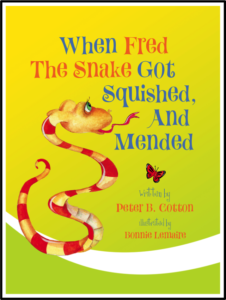
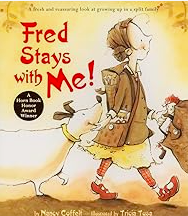
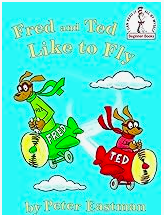

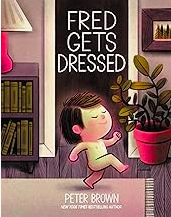
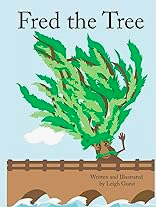
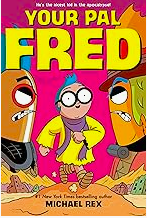
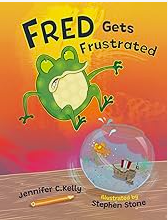
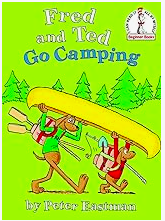
 That’s quite enough for now……thanks for listening…Go Fred
That’s quite enough for now……thanks for listening…Go Fred 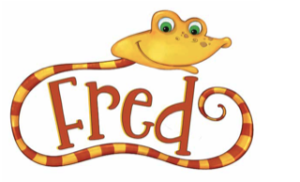
The post Why Snake, and why Fred? appeared first on Peter Cotton's Tales.



